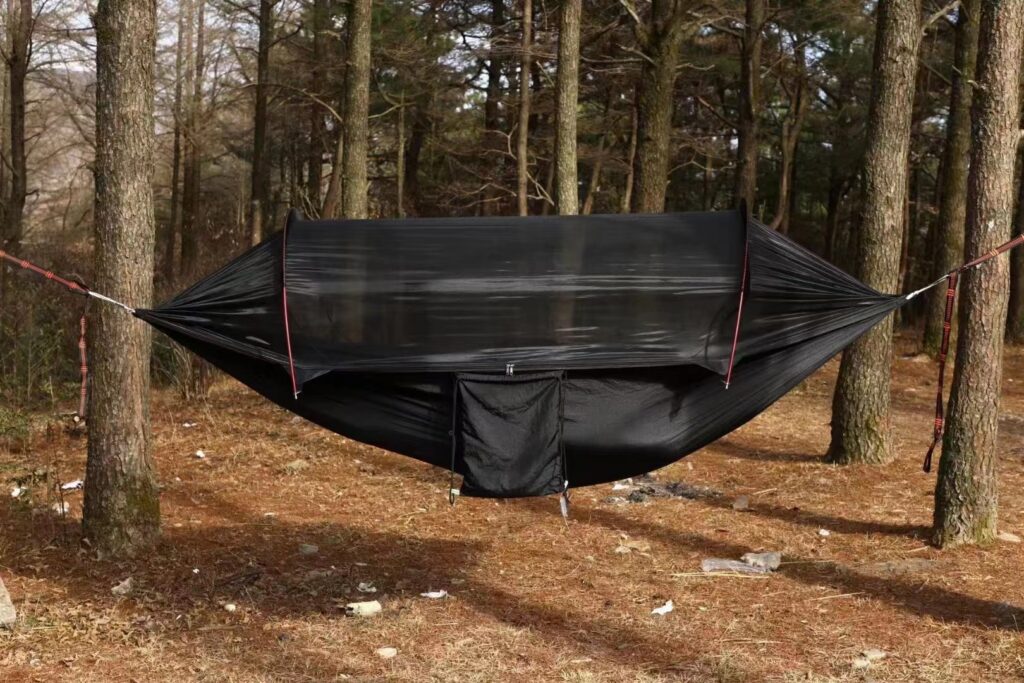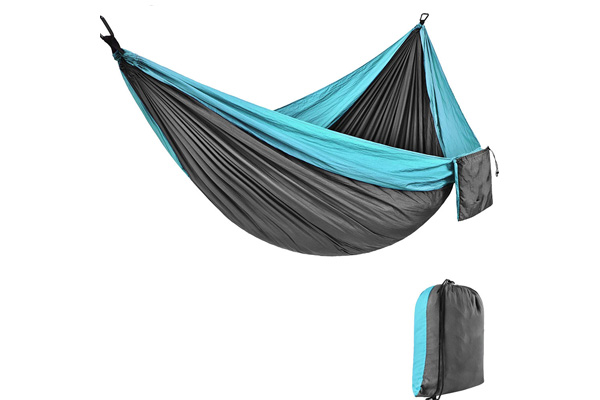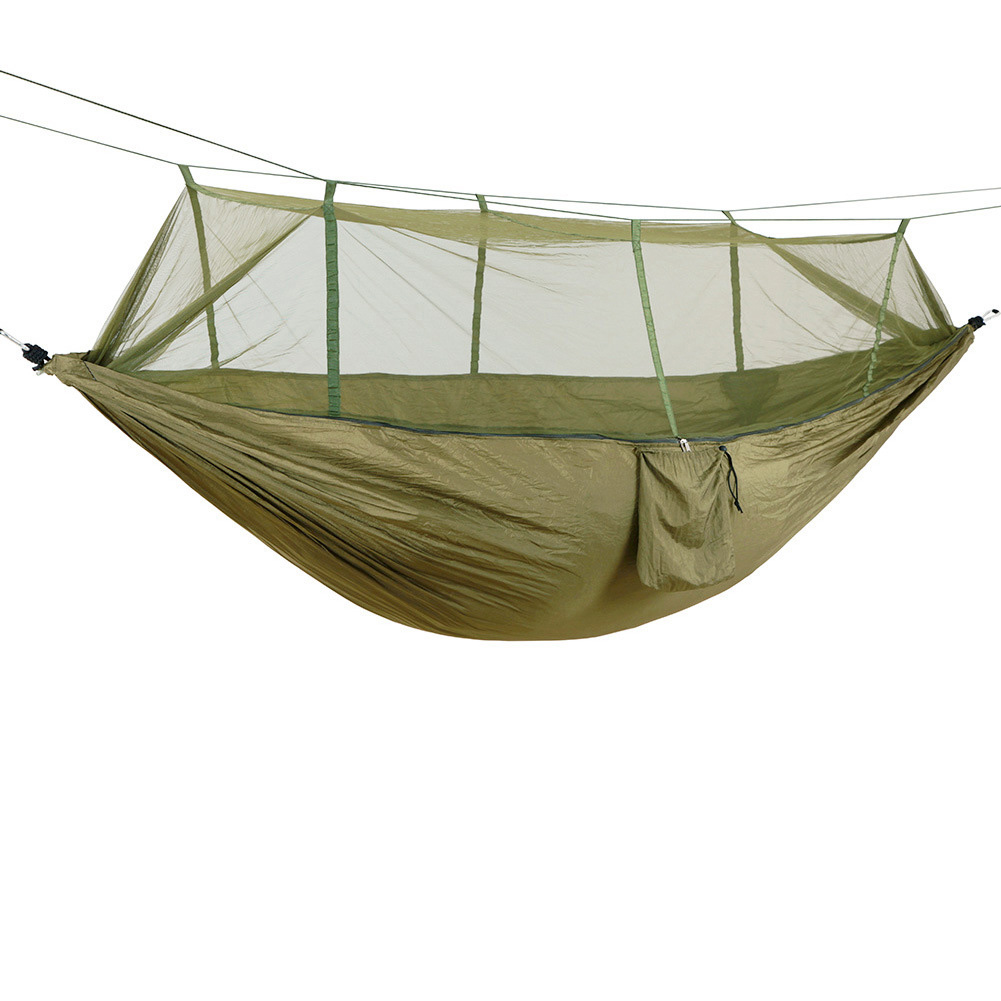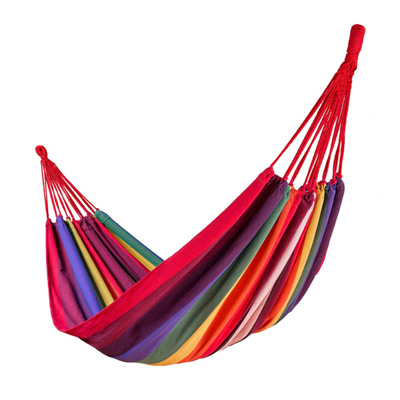Camping has always been a beloved pastime, offering an escape into nature and a break from the hustle of daily life. In recent years, camping hammocks have gained immense popularity among outdoor enthusiasts. The year 2024 has brought exciting advancements in camping hammocks, combining comfort, convenience, and innovation. In this guide, we delve into everything you need to know about the new camping hammocks of 2024.
New Camping Hammocks: Revolutionizing Outdoor Adventures
The world of camping hammocks has evolved significantly, offering more than just a place to rest. They now serve as a symbol of adventure, combining technology with traditional outdoor experiences. The latest models in 2024 feature advancements in materials, design, and functionality, making them more appealing than ever before.
New camping hammock: Automatic Hammock with Mosquito Net

Here is a table listing the details of the product:
| Information | Detail |
|---|---|
| Description | Automatic Quick-opening Mosquito Net Hammock |
| Size (cm) | 290*140 |
| Material | Parachute nylon |
| Loading Capacity | 200kg |
| Package | 1pc/pouch; 25pcs/ctn |
| Carton Size (cm) | 50×38x50 |
| CBM/CTN | 0.12 |
| QTY/CTN | 25 |
| G.W/N.W (kgs) | 26/25 |
| MOQ(pcs) | 500pcs |
The Rise of Camping Hammocks in 2024
Camping hammocks in 2024 have taken the outdoor world by storm. They are no longer just a niche product but have become a mainstream choice for campers. The rise is attributed to their versatility, portability, and the unique camping experience they offer.
Benefits of Using Camping Hammocks
Choosing a camping hammock over traditional tents comes with several benefits. They are lighter, easier to set up, and offer a closer connection with nature. Hammocks also reduce the impact on the environment, as they leave no footprint and minimize ground disturbance.
Evolution of Camping Hammocks
Camping hammocks have a rich history, evolving from simple designs to the sophisticated options available today.
History
The concept of hammocks dates back centuries, originally used by native inhabitants in Central and South America. They were designed for sleeping above the ground, away from harmful insects and animals.
Read more: What Is the History of the Origin of the Hammock?
Recent Innovations
In 2024, camping hammocks have seen significant innovations. These include ultralight materials, integrated bug nets, and weather-resistant features, making them suitable for a wide range of environments.
Types of Camping Hammocks
The variety of camping hammocks available today caters to different needs and preferences.

2. Above parachute nylon hammock with mosquito net.

3. Improved design of the mosquito net automatic open on the hammock.


Here is a comparative table for the different types of hammocks, including size, material, usage, cons, and pros, as requested:
| Hammock Type | Size (cm) | Material | Usage | Pros | Cons |
|---|---|---|---|---|---|
| Parachute Nylon Basic Hammock | Varies | Parachute Nylon | General outdoor use, camping, hiking | Lightweight, durable, easy to pack, quick-drying | Less insulation, no bug protection |
| Parachute Nylon Hammock with Mosquito Net | Varies | Parachute Nylon | Outdoor use in bug-rich environments | Bug protection, lightweight, durable | More complex setup than the basic hammock |
| Improved Mosquito Net Automatic Opened Hammock | Varies | Parachute Nylon | Camping, hiking in bug-rich areas | Easy access with automatic net, bug protection | Could be heavier due to the automatic mechanism |
| Cotton Hammock | Varies | Cotton | Casual use, backyard relaxation | Comfortable, aesthetically pleasing | Heavier, not weather-resistant, longer drying time |
Please note that the actual dimensions (size) would vary by manufacturer and specific product line. The material listed is typical for each type of hammock. The usage column includes common scenarios where each type of hammock might be used, and the pros and cons are generalized and might not apply to every model available in the market.
Choosing the Right Camping Hammock
Selecting the right camping hammock involves considering several factors to ensure it meets your camping needs.
Here is a table summarizing the key points regarding choosing the right camping hammock:
| Factor | Considerations |
|---|---|
| Weight Capacity | Ensure the hammock can support your weight and any gear you might have in the hammock with you. |
| Size | Choose between single or double sizes based on your space needs and comfort preferences. |
| Intended Use | Determine if the hammock is for backpacking (lightweight and compact), casual camping, or backyard relaxation (comfort may be prioritized). |
| Portability | Consider the packed size and weight of the hammock for ease of transport and setup. Ultra-light models are available for long hikes. |
| Safety | Use proper anchoring techniques with sturdy straps and healthy trees. Test for stability before use. |
| Weather Preparedness | Be ready for various weather conditions with wind setups, rain covers, and proper insulation to maintain comfort and safety. |
| Anchoring Techniques | Use reliable straps, find strong and healthy trees, and follow guidelines to ensure the hammock is secure. |
| Weatherproofing | Consider hammocks with built-in bug nets, waterproofing, and wind resistance. Add-on tarps and underquilts can provide additional protection. |
Size and Weight Considerations
Size and weight are critical for portability and ease of setup. Hammocks vary in size, from single to double, and in weight, from ultra-light to more substantial models.
Safety Measures for Hammock Camping
Safety is a priority when it comes to hammock camping.
Anchoring Techniques
Proper anchoring techniques ensure the hammock is secure and stable. This involves using sturdy straps and ensuring the trees are healthy and strong.
Weather Considerations
Being prepared for various weather conditions is crucial. This includes understanding how to set up in windy conditions and using appropriate rain covers and insulation.
Setting Up Your Camping Hammock
Setting up a camping hammock can be straightforward if you know the right steps.
Step-by-Step Guide
A step-by-step guide helps first-timers set up their hammock efficiently. This includes selecting the right trees, adjusting the straps, and ensuring stability.
Tips for First-Timers
For those new to hammock camping, tips like checking for obstacles beneath the hammock and testing the setup before use can be invaluable.
Top Manufacturers of Camping Hammocks
Brands like Jaunty Leisure, Eagles Nest Outfitters (ENO), Hennessy Hammock, and Kammok have set the standard with their innovative designs and quality materials.
Accessories for Camping Hammocks
To enhance the camping hammock experience, various accessories are available. When considering suspended hammock camping, insulation is key for colder weather, and an underquilt can be more effective than a traditional sleeping bag or pad. Hammock straps, carabiners, and the right hammock stand (if you plan to use your hammock where trees are sparse) are all essential accessories for a secure and comfortable hammock setup.
Now, let’s provide a table listing the accessories for camping hammocks and their usage:
| Accessory | Usage |
|---|---|
| Carabiners | Used to quickly and securely attach the hammock to the straps or ropes on either end. |
| Tree Straps | Wrap around trees to protect the bark and provide a strong anchor point for the hammock. |
| Ropes | Can be used as an alternative to straps or in combination with them for extra security. |
Are camping hammocks good?
Camping hammocks are indeed a good choice for many outdoor enthusiasts. They offer a unique way to sleep outdoors, elevating you off the ground, which can be both comfortable and thrilling. The use of a camping hammock allows for a quick setup, often faster than traditional tents, making them perfect for backpacking where time and ease are of the essence. Many camping hammocks are designed to be ultralight, making them an excellent choice for those who wish to travel light.
Another advantage is that hammocks minimize impact on the environment; there’s no need to clear a spot on the ground or worry about rocky, uneven terrain. With a hammock, you only need two sturdy trees to set up camp. Many models come with a built-in mosquito net and tarp, providing protection from bugs and the elements, enhancing your camping experience.
However, it’s important to consider that hammocks can be less insulated than tents, so in colder weather, additional gear like an underquilt may be necessary. Also, in areas without trees or with strict regulations on tree use, a hammock might not be as practical.
In summary, camping hammocks are a good option if you’re looking for a lightweight, easy-to-set-up sleeping solution that offers comfort and a minimal environmental footprint, provided that you are camping in an area with suitable trees and mild weather conditions.
How safe are hammocks?
Hammocks are generally safe to use, especially if you follow some basic guidelines to ensure their proper setup and use. Here are a few safety considerations to keep in mind:
- Anchoring: Make sure that the trees or structures you’re anchoring the hammock to are sturdy and healthy. The anchor points should be able to support your weight plus any additional gear you might keep in the hammock.
- Straps and Hardware: Use high-quality straps and carabiners. Tree straps should be wide enough to not damage the trees, and carabiners should be without sharp edges that could tear the hammock fabric.
- Height: Set up your hammock at a safe height. As a rule of thumb, it should be low enough that if you were to fall out, you wouldn’t be seriously injured. Typically, your hammock should be no more than 18 inches above the ground.
- Inspection: Before each use, inspect your hammock, straps, and carabiners for signs of wear or damage. Over time, these materials can degrade, especially with frequent use or exposure to the elements.
- Weather Conditions: Be mindful of the weather. Avoid setting up hammocks in stormy or high-wind conditions that could cause falling branches or other hazards.
- Weight Capacity: Adhere to the weight limit specified by the hammock manufacturer. Overloading a hammock can cause it to fail.
- Proper Use: Enter and exit the hammock carefully. Sudden movements can cause the hammock to swing or flip.
- Location: Be conscious of your surroundings. Do not set up your hammock over sharp rocks, on steep inclines, or near fire pits.
With these safety measures in place, hammock camping can be a secure and enjoyable experience. It’s also a peaceful way to enjoy nature, with the comfort of being cradled as you rest. As with any outdoor gear, proper use and maintenance are key to safety.

